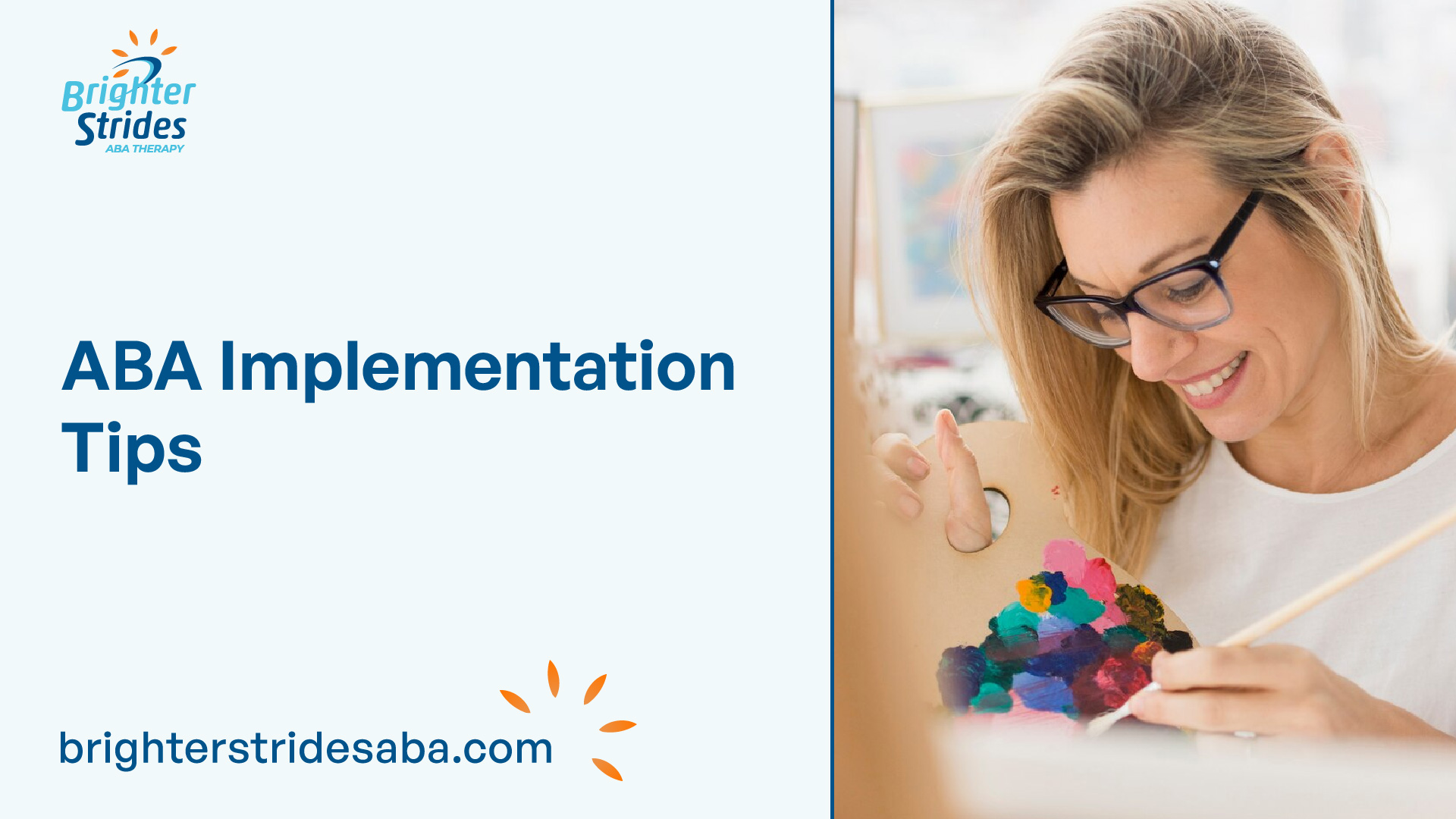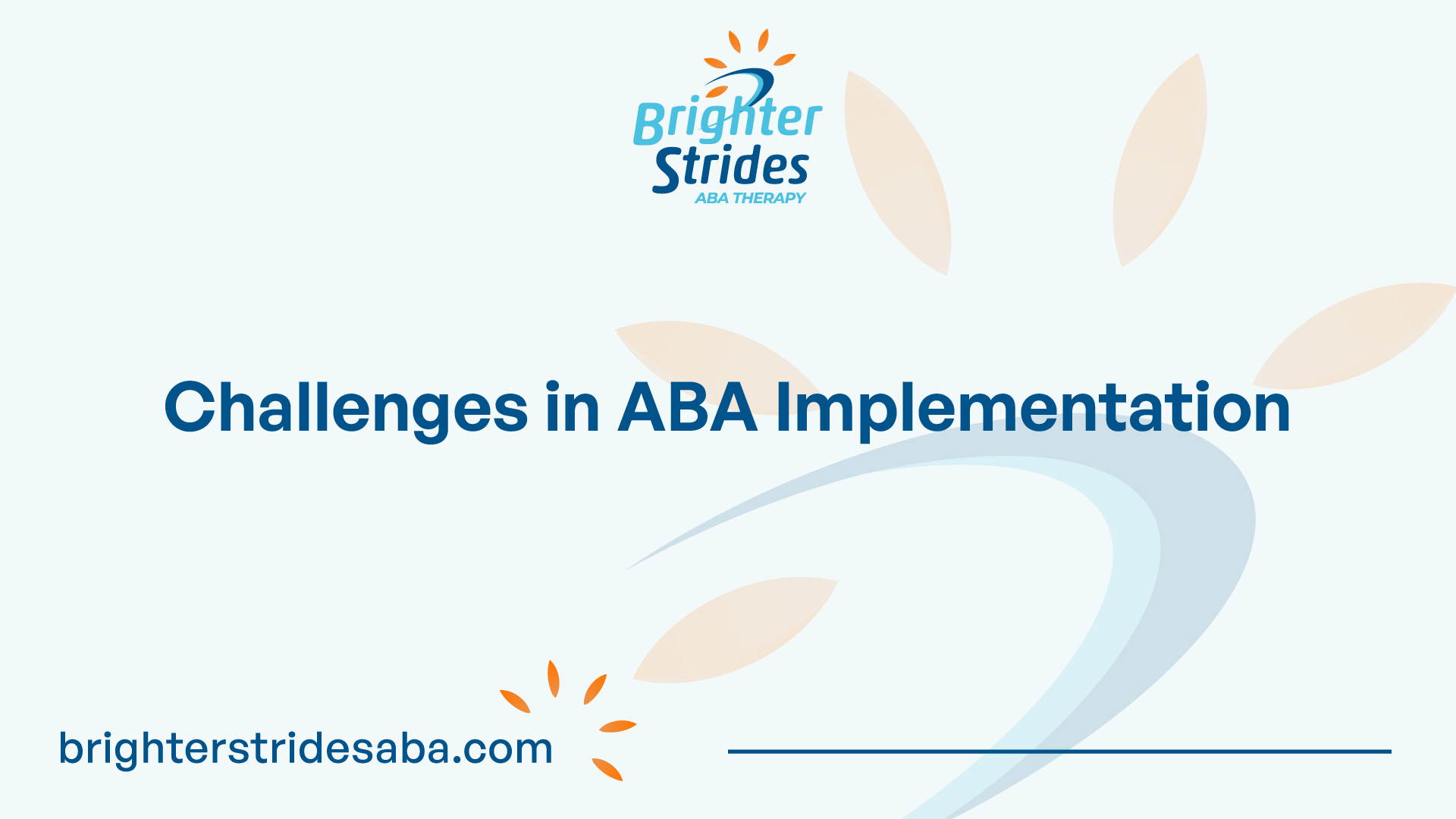
Data Collection Methods
Data collection is a crucial aspect of ABA implementation, as it provides valuable insights and informs decision-making processes. By collecting and analyzing data, practitioners can better understand behavior patterns, measure progress, and make informed adjustments to intervention strategies. In this section, we will explore the importance of data collection and the factors to consider before collecting data.
Importance of Data Collection
Data collection plays a fundamental role in the ABA Therapy process. It allows practitioners to track and evaluate the effectiveness of interventions, identify areas for improvement, and make data-driven decisions. Without accurate and reliable data, it would be challenging to objectively assess progress and tailor interventions to meet individual needs.
Data collection provides a means to measure behavior changes, identify trends, and determine the effectiveness of behavior intervention plans [1]. It also facilitates communication and collaboration among the interdisciplinary team involved in ABA implementation, enhancing the overall quality of care.
Factors to Consider Before Collecting Data
Before embarking on a data collection process, it is essential to consider several factors to ensure its effectiveness and relevance. These factors include:
- Defining the Purpose: Clearly defining the purpose of data collection is crucial. Organizations should identify the question they seek to answer or the problem they aim to address. This clarity helps guide the entire data collection process and ensures that the collected data aligns with the organization’s goals.
- Type of Data Needed: Determining the type of data needed is important. This includes deciding whether qualitative or quantitative data is required and selecting appropriate measurement tools. Different data types provide different insights, and selecting the most appropriate type for the specific situation is key.
- Timeframe and Budget: Consideration should be given to the timeframe and budget allocated for data collection. Adequate time and resources should be allocated to collect data effectively and efficiently. Planning ahead helps ensure that data collection stays on track and within the allocated budget.
It is also important to conduct an internal and external assessment to identify issues and opportunities for data collection [2]. This assessment should take into account factors such as organizational culture, human rights, diversity, and equity-inclusion lenses. By considering these factors, organizations can determine what issues to explore and how to collect data effectively.
Once these factors have been considered, organizations should set specific goals for each issue or opportunity identified for data collection. These goals should be rationally connected to the purpose of collecting the data and should facilitate the testing of hypotheses related to discrimination, systemic barriers, or other relevant factors.
By carefully considering these factors and setting clear goals, organizations can embark on a data collection process that collects relevant and meaningful data, ultimately contributing to improved ABA implementation and outcomes.
ABA Implementation Techniques
When it comes to implementing Applied Behavior Analysis (ABA) Techniques, it’s essential to utilize effective data collection methods. These methods help gather valuable information that can guide decision-making and inform intervention strategies. In this section, we will explore three commonly used techniques: surveys, interviews and focus groups, and online tracking methods.
Surveys for Data Collection
Surveys are a versatile data collection method that can gather both qualitative and quantitative data from subjects. They are particularly useful for obtaining feedback from individuals after events or on specific topics. Surveys can provide insights into attendee feedback, satisfaction levels, preferences, and more [1].
When using surveys in ABA implementation, it’s important to design clear and concise questions that target specific areas of interest. Surveys can be administered in various formats, including paper-based questionnaires, online surveys, or even mobile applications. By analyzing the survey responses, professionals can gain a better understanding of the effectiveness of their interventions and make informed decisions for future planning.
Interviews and Focus Groups
Interviews and focus groups are valuable techniques for gathering qualitative and quantitative data by interacting with subjects face-to-face. These methods allow for in-depth exploration of opinions, motivations, feelings, and experiences related to specific products, brands, or interventions. They can provide insights into user perspectives, preferences, and areas for improvement.
In the context of ABA implementation, interviews and focus groups can be conducted with individuals receiving interventions, their families, and other key stakeholders. By engaging in meaningful conversations, professionals can gather rich qualitative data that complements the quantitative data collected through other methods. This enables a comprehensive understanding of the individual’s progress, challenges, and preferences.
Online Tracking Methods
Online tracking methods, such as pixels and cookies, are increasingly used to collect behavioral data about users’ online activities. These methods provide insights into user interests, engagement, and website navigation patterns, which can be valuable for improving website design and user experience. Online tracking methods can also help identify areas for intervention and target specific behaviors or preferences [1].
In the field of ABA implementation, online tracking methods can be employed to gather information about user interactions with technology-based interventions, educational platforms, or online resources. By analyzing the collected data, practitioners can identify trends, measure progress, and make informed decisions regarding the effectiveness of these interventions and the need for adjustments.
By utilizing surveys, interviews and focus groups, and online tracking methods, ABA professionals can gather valuable data to inform their decision-making processes. It’s important to ensure that data collection methods are aligned with ethical considerations and privacy protection legislation. By employing these techniques effectively, professionals can enhance their understanding of individual progress, tailor interventions, and improve outcomes in the field of ABA.

Challenges in ABA Implementation
Implementing Applied Behavior Analysis (ABA) techniques can present various challenges that professionals in the field need to navigate. In this section, we will explore three specific challenges: split-second decisions, behavior intervention plans (BIPs), and time management for BCBA-Ds.
Split-Second Decisions
Registered Behavior Technicians (RBTs) in the field of ABA often find themselves facing split-second decisions while implementing treatment plans for individuals with Autism. These decisions require them to strike a balance between professionalism and friendliness, while adhering to ethical guidelines [3].
When confronted with challenging behaviors, RBTs must rely on their training and knowledge to make clinically sound decisions. These decisions can range from modifying intervention strategies on the spot to ensuring the safety and well-being of the individuals they are working with. The ability to think quickly and apply appropriate interventions is essential in achieving positive behavior change.
Behavior Intervention Plans (BIPs)
Behavior Intervention Plans (BIPs) play a crucial role in guiding behavior change for individuals with Autism. These plans are developed following a Functional Behavior Assessment and outline specific interventions to address challenging behaviors. The success of these interventions relies heavily on the strict adherence to the BIP and accurate data collection [3].
RBTs must ensure that they are implementing the strategies outlined in the BIP accurately and consistently. This requires careful observation, data collection, and analysis to monitor progress and make informed decisions regarding the effectiveness of the interventions. By following the BIP closely and collecting accurate data, RBTs can maximize the chances of successful behavior change.
Time Management for BCBA-Ds
Board Certified Behavior Analyst-Doctoral (BCBA-D) practitioners, along with other ABA professionals, often face the challenge of managing high caseloads and limited time for each case. This necessitates effective time management skills and the ability to rely on observations and data from various sources to make intervention decisions [3].
BCBA-Ds must prioritize their time and allocate it efficiently to ensure that they can provide quality supervision, conduct assessments, develop behavior intervention plans, and monitor progress. This requires balancing the demands of multiple cases, coordinating with other team members, and making decisions based on available data and observations.
By recognizing and addressing these challenges, professionals in the field of ABA can enhance their ability to implement effective interventions and support individuals with Autism in achieving meaningful behavior change. It is through their dedication and expertise that breakthroughs in ABA can be achieved.
Skills Needed for ABA Supervisors
Supervisors in the field of Applied Behavior Analysis (ABA) play a crucial role in overseeing and implementing effective interventions for clients. To excel in this role, ABA supervisors must possess a wide range of knowledge and skills. Let’s explore three essential skills needed for ABA supervisors: understanding developmental norms, implementing teaching techniques, and effective communication strategies.
Understanding Developmental Norms
A solid understanding of developmental norms is vital for ABA supervisors. Developmental norms refer to the typical milestones and patterns of growth and development that individuals progress through during childhood and adolescence. By having a deep understanding of these norms, supervisors can accurately assess a client’s current level of functioning, identify areas of need, and develop appropriate intervention plans.
ABA supervisors need to be familiar with the various domains of development, including cognitive, language and communication, social-emotional, and motor skills. This knowledge allows them to tailor interventions to the specific needs of each client, ensuring that the goals and strategies align with the individual’s developmental stage.
Implementing Teaching Techniques
Another essential skill for ABA supervisors is the ability to implement effective teaching techniques. ABA interventions are based on evidence-based scientific methods and rely on a variety of teaching strategies to promote skill acquisition and behavior change.
Supervisors should be knowledgeable about different teaching techniques commonly used in ABA therapy, such as prompt and fade procedures, video modeling, and natural environment teaching. Prompt and fade procedures involve using prompts or cues, such as physical guidance or verbal reminders, to teach new skills. Over time, these prompts are gradually reduced to promote independence in the individual.
Video modeling is another effective teaching tool, particularly for visual learners, such as children with autism. It involves using videos to demonstrate social interactions, emotional expressions, or specific skills for individuals to imitate. This technique can enhance learning and generalization of skills [4].
Additionally, supervisors should be well-versed in natural environment teaching, which focuses on teaching skills in real-life settings. This approach allows individuals to practice and generalize skills in authentic environments, such as the grocery store or playground. Although challenging, natural environment teaching has proven to be highly effective in promoting skill acquisition [4].
Effective Communication Strategies
Effective communication is a fundamental skill for ABA supervisors. Clear and concise communication is essential for collaborating with clients, their families, and a multidisciplinary team. ABA supervisors must be able to explain complex concepts in a way that is easily understood by others.
Strong communication skills also help supervisors effectively train and provide feedback to behavior technicians and other staff members. Supervisors need to clearly articulate expectations, provide guidance, and offer constructive feedback to ensure that interventions are implemented with fidelity and consistency.
Furthermore, effective communication involves active listening, empathy, and the ability to adapt communication styles to meet the needs of different individuals and situations. ABA supervisors must be able to establish rapport with clients and their families, fostering a trusting and collaborative therapeutic relationship.
By honing these skills, ABA supervisors can enhance their ability to lead and support successful ABA interventions. Understanding developmental norms, implementing teaching techniques, and employing effective communication strategies are crucial components of effective ABA supervision.

Work-Life Balance in ABA
Maintaining a healthy work-life balance is crucial for professionals in the field of ABA [3]. The demanding nature of ABA therapy and the need for flexibility can make it challenging to establish boundaries and manage daily stressors. In this section, we will explore strategies for managing daily stressors, establishing boundaries, and emphasizing the importance of self-care.
Managing Daily Stressors
Working in ABA therapy can be emotionally and physically demanding. It is important for ABA professionals to have strategies in place to manage daily stressors and prevent burnout. Some effective strategies include:
- Setting realistic goals: Progress in ABA therapy can be gradual and varies from one individual to another. Setting realistic goals helps to manage expectations and celebrate the small victories along the way [5].
- Practicing self-compassion: ABA professionals should prioritize self-compassion and treat themselves with kindness and understanding. This involves acknowledging personal limitations, taking breaks when needed, and avoiding self-judgment when facing challenges.
- Maintaining open communication: A supportive work environment is essential for managing stress. ABA professionals should foster open communication with their colleagues, supervisors, and clients to address concerns, seek support, and share successes and challenges.
Establishing Boundaries
Establishing clear boundaries between work and personal life is essential for achieving a healthy work-life balance. Here are some strategies to consider:
- Setting work hours: ABA professionals should define their work hours and strive to stick to them. This helps create a structure and allows for personal time outside of work.
- Managing work-related communication: It can be tempting to respond to work-related messages or emails outside of work hours, but it is important to set boundaries. ABA professionals should communicate their availability and establish expectations regarding after-hours communication with their supervisors and clients.
- Creating a dedicated workspace: Having a designated workspace at home can help create a physical boundary between work and personal life. It allows individuals to mentally separate work time from personal time.
Importance of Self-Care
Prioritizing self-care is vital for maintaining a healthy work-life balance in ABA. Here are some self-care practices to consider:
- Taking breaks: ABA professionals should schedule regular breaks throughout the day to recharge and avoid burnout. Even short breaks can provide an opportunity to relax, breathe, and refocus.
- Engaging in activities outside of work: Finding hobbies or activities outside of work helps create a sense of balance and fulfillment. It is important to make time for activities that bring joy and relaxation.
- Seeking support: ABA professionals should not hesitate to seek support from colleagues, friends, or family members. Talking about work-related challenges or seeking advice can provide a fresh perspective and help manage stress.
By implementing strategies to manage daily stressors, establish boundaries, and prioritize self-care, ABA professionals can achieve a healthier work-life balance. Remember, maintaining a balance between work and personal life is essential for long-term success and well-being in the field of ABA.
7 Dimensions of ABA
Applied Behavior Analysis (ABA) is a discipline that is guided by the 7 dimensions established by Baer, Wolf, and Risley in 1968 [6]. These dimensions serve as the foundation for effective ABA implementation and ensure the highest quality of treatment. Let’s explore the 7 dimensions of ABA in more detail.
Principles of Applied Behavior Analysis
The principles of applied behavior analysis form the basis of ABA. These principles are derived from scientific research and have been proven effective in diverse fields such as education, developmental disabilities, autism, and clinical psychology. ABA focuses on solving socially important problems in socially important settings by applying these principles.
Behavior Change and Generality
A crucial aspect of ABA implementation is behavior change. The goal of ABA interventions is to bring about lasting behavior change that is meaningful and applicable across various individuals, settings, and situations. This concept is known as generality.
Behavior change achieved through ABA should endure over time and generalize to different contexts. It involves teaching skills that will persist long after the intervention has ended. The focus is on promoting functional skills that individuals can apply in their everyday lives.
Components of ABA Interventions
ABA interventions are designed to be precise and comprehensive, with clearly defined and replicable components. These interventions should be described in a way that is detailed enough for others to replicate them accurately. This ensures that the intervention is both technological and easy to replicate with high treatment integrity [6].
Technological interventions allow for clear communication and replication of treatment strategies. By documenting the components of ABA interventions, practitioners can share their methods and findings, contributing to the advancement of the field and promoting evidence-based practice.
The 7 dimensions of ABA provide a comprehensive framework for practitioners to effectively implement ABA interventions. By adhering to these dimensions, ABA professionals can ensure that their interventions are grounded in evidence-based principles, promote behavior change and generality, and have clear and replicable components. Understanding and applying these dimensions is essential for delivering high-quality ABA services.

 We've just released an article! Check out our blog!
We've just released an article! Check out our blog! 


